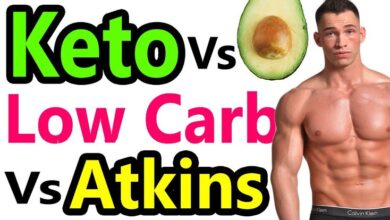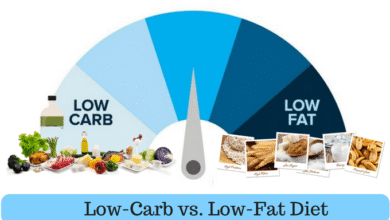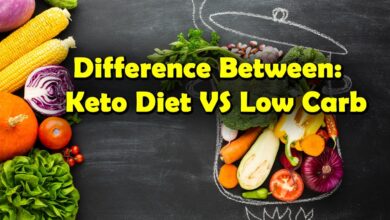What Food Do Diabetics Need to Stay Away From? A Complete Guide to Diabetes Nutrition

Living with diabetes isn’t just about taking medication or checking blood sugar levels—it’s also about the daily choices you make at the dining table. Food is more than fuel for diabetics; it can either be a friend that supports stable blood sugar or a hidden enemy that silently pushes your health in the wrong direction. Many people wonder: what food do diabetics need to stay away from? That question is crucial because avoiding certain foods can reduce complications like nerve damage, kidney failure, heart disease, and even blindness.
Think about it like this: your body is an engine, and the food you eat is the fuel. If you put in dirty fuel, the car won’t run well—it will cough, choke, and eventually break down. Diabetes works the same way. Eating the wrong foods may not cause instant harm, but over time, it weakens your system, raises your risks, and shortens your life span. For people in Africa, where high-carb staples dominate, and in Europe, where processed snacks are common, food choices become even more critical. In this article, we’ll take a deep dive into the foods diabetics must avoid, why they’re harmful, and the smarter alternatives that keep you healthy without feeling deprived.
Read Also Best Morning Foods to Control Diabetes Naturally | Healthy Breakfast for Blood Sugar Management
Why Food Choices Matter in Diabetes Management
When it comes to diabetes, every bite counts. Unlike people without diabetes, whose bodies can handle occasional sugar overloads by producing extra insulin, diabetics face a different reality. Their insulin response is impaired, meaning that even “small” sugar surges from certain foods can cause harmful spikes. Over time, these spikes damage blood vessels and nerves, leading to complications such as vision loss, heart attacks, and kidney disease.
Picture it this way: your blood sugar levels are like a seesaw. In a non-diabetic body, insulin works as the person balancing the seesaw—keeping both sides steady. But with diabetes, the person balancing is weak, tired, or sometimes absent. That means any sudden weight (sugar) on one side sends the seesaw crashing down. This is why diet matters more than most people realize.
Foods high in refined carbohydrates, trans fats, and added sugars cause this imbalance the most. And unfortunately, these foods dominate modern diets across Africa and Europe. Sugary drinks, white rice, fried street food, and packaged snacks may seem convenient or tasty, but they are silent health destroyers. Making informed choices and avoiding these traps can stabilize your blood sugar, improve energy levels, and help you live longer.
The Hidden Dangers of Sugary Beverages
Let’s start with one of the biggest culprits: sugary drinks. Soft drinks, energy boosters, malt beverages, and even bottled “fruit juices” are loaded with sugar. For instance, one can of soda may contain more than 10 teaspoons of sugar—that’s far more than the daily limit recommended for healthy adults, let alone someone with diabetes. The problem with these drinks is that they deliver “free sugars” that bypass your digestive system’s normal breakdown processes, rushing straight into your bloodstream like a flood.
Imagine standing by a dam and suddenly opening the floodgates—that’s how your blood sugar reacts to these beverages. Unlike whole fruits that come with fiber to slow absorption, juices and sodas hit you hard and fast. The result? Rapid sugar spikes, followed by a crash that leaves you tired, hungry, and craving more sugar.
In African households, malt drinks and bottled juices are often seen as healthier alternatives to soda, while in Europe, fruit smoothies and energy drinks dominate the shelves. Sadly, they’re just sugar bombs in disguise. If you’re diabetic, water, unsweetened herbal tea, or sparkling water with lemon should be your go-to beverages. These keep you hydrated without wreaking havoc on your glucose levels.
Processed Snacks and Packaged Foods
Everyone loves convenience, and that’s why processed snacks—biscuits, crackers, and chips—are so popular. But for diabetics, these foods are like wolves in sheep’s clothing. They taste great, fill you up quickly, and often come cheap. However, they’re made with refined flours, artificial flavors, preservatives, and unhealthy fats that trigger inflammation and rapid sugar spikes.
Think of them as fast-burning firewood. They give you heat instantly but burn out too quickly, leaving you cold again and craving more. That’s exactly how your body feels after munching on processed snacks: a quick rush followed by hunger and fatigue.
In Africa, imported biscuits and locally made fried snacks dominate the streets, while in Europe, supermarket aisles are lined with wafer bars, salty crisps, and chocolate-coated treats. All of these share one dangerous feature: high glycemic index. This means they raise blood sugar fast and crash it soon after, increasing the risk of insulin resistance.
Smarter snack choices include roasted peanuts, pumpkin seeds, boiled corn, or air-popped popcorn without sugar or butter. These alternatives provide protein, healthy fats, and fiber—keeping you fuller for longer while protecting your blood sugar balance.
White Bread, Rice, and Refined Grains
Refined grains like white rice, white bread, and pasta made from refined flour are another group diabetics should minimize. Why? Because they act almost like pure sugar in your body. Without fiber to slow digestion, they break down quickly into glucose, causing a sharp rise in blood sugar.
Imagine running on a treadmill that suddenly speeds up without warning—that’s what your body experiences when you eat refined grains. Your blood sugar shoots up, your pancreas struggles to respond, and you crash later, often feeling hungrier than before.
In Africa, white rice and bread are daily staples, while in Europe, pasta and baguettes are common. The danger isn’t in eating carbs altogether—it’s in eating the wrong kind. Swapping refined grains for whole grains like millet, sorghum, quinoa, oats, and brown rice can change the game. Whole grains release energy slowly, helping your blood sugar remain stable while nourishing your body with fiber, vitamins, and minerals.
The transition may seem hard at first, but once you adjust, you’ll notice fewer sugar crashes and more consistent energy throughout the day.
Full-Fat Dairy Products and Creamy Sauces
Creamy foods feel indulgent, but for diabetics, they’re a double-edged sword. Full-fat dairy products like cream, butter, cheese, and flavored milk aren’t just high in calories—they’re also loaded with saturated fats. These fats make insulin less effective, worsening blood sugar control. They also raise cholesterol levels, increasing the risk of heart disease, which diabetics are already prone to.
Think of it like trying to push a car uphill while dragging weights tied to your legs. Your body has to work harder, and eventually, it gives out. That’s what saturated fats do to your insulin function.
In African dishes, full-fat milk is often used in teas and porridges, while in Europe, creamy sauces dominate pastas and stews. The smarter switch is to low-fat milk, Greek yogurt, or plant-based alternatives like almond or soy milk. You can still enjoy the creamy texture without the dangerous fats.
Even better, flavor your dishes with herbs and spices instead of fatty sauces. Not only will your meals taste better, but your heart and blood sugar will thank you.
Fried Foods and Trans Fats
Nothing tastes quite like crispy fried chicken, French fries, or local street snacks like puff-puff or akara. Unfortunately, for diabetics, fried foods are landmines. They’re often cooked in hydrogenated oils, which create trans fats. These fats clog arteries, raise bad cholesterol (LDL), and lower good cholesterol (HDL). For someone already at risk of heart complications, this is like pouring gasoline on a fire.
But it doesn’t stop there. Fried foods are also calorie-dense, meaning they can lead to weight gain, which worsens insulin resistance. Think of fried foods as a double agent—they taste like friends but secretly sabotage your health.
African street food culture makes fried snacks easy to access, while Europe’s fast-food chains offer endless fried options. But alternatives like grilled chicken, baked plantain, or roasted sweet potatoes can give you satisfaction without health risks. Using air fryers is also a healthier modern hack for enjoying “fried” foods with minimal oil.
High-Sugar Breakfast Cereals
Breakfast is supposed to fuel your day, but many cereals marketed as “healthy” or “energizing” are just bowls of sugar in disguise. Some popular brands contain as much sugar as a doughnut, making them one of the worst ways for diabetics to start their day.
Think of it this way: if your body is a car, starting your morning with sugary cereal is like filling your tank with fizzy soda. You’ll get a quick boost but sputter out before lunch. For diabetics, that sugar spike can set the tone for an unstable day of highs and lows.
Instead, whole-grain oats, bran flakes, or sugar-free muesli with nuts and seeds make better choices. You can even add cinnamon, which has been shown to help regulate blood sugar. In Africa, traditional porridges made from millet or sorghum can be great options, provided they’re prepared without excessive sugar.
Red Meat and Processed Meats
Bacon, sausages, corned beef, and fatty steaks may be delicious, but they are bad news for diabetics. These meats increase inflammation in the body and worsen insulin resistance. They’re also high in unhealthy fats, which clog arteries and increase heart disease risk.
Imagine throwing dirty oil into a clean machine—it doesn’t just make it less efficient; it eventually causes breakdown. That’s how processed meats affect your body.
In Africa, goat meat, suya, and fatty beef cuts are popular, while in Europe, sausages, ham, and burgers are everyday staples. A healthier alternative is to shift toward lean proteins such as chicken breast, fish, beans, lentils, and tofu. These provide the protein you need without overwhelming your body with fats and additives.
Sweetened Yogurts and Flavored Drinks
Yogurt has a reputation for being healthy, but flavored varieties often contain shocking amounts of sugar. Some contain more sugar than ice cream! For diabetics, eating sweetened yogurt is like inviting trouble disguised as a friend.
Flavored waters and vitamin drinks are no better—they promise “health benefits” but usually load you with sugar. Imagine taking medicine that secretly contains poison—it cancels out any good it might do. That’s what hidden sugars in these drinks do.
The solution? Stick to plain, unsweetened yogurt and add your own fresh fruit or cinnamon for flavor. For hydration, water remains unbeatable, while green tea or infused water with cucumber and mint can add variety.
Cakes, Pastries, and Desserts
This is the hardest part for most people: saying no to cakes, pastries, pies, and puddings. These desserts combine sugar, refined flour, and unhealthy fats, creating the ultimate blood sugar disaster. For diabetics, it’s like throwing fireworks into a crowded room—chaotic and dangerous.
In Africa, sweet pastries are part of weddings, birthdays, and holidays, while in Europe, dessert often finishes every meal. While occasional indulgence is okay, frequent consumption leads to poor control and complications.
Fruit-based desserts like baked apples or blended smoothies with no added sugar are healthier swaps. They still satisfy your sweet tooth without creating glucose havoc.
Alcohol and Its Complicated Relationship with Diabetes
Alcohol deserves special mention because it behaves differently depending on the drink and quantity. Beer and sweet cocktails are loaded with carbs and sugar, while excessive alcohol can dangerously lower blood sugar, especially for those on insulin.
In social cultures across Africa and Europe, refusing alcohol can feel awkward. But for diabetics, moderation is non-negotiable. Think of alcohol like fire—it can warm you if controlled but burn you if misused.
Healthier options include dry wine in small amounts or mixing spirits with sugar-free mixers. Always consult your doctor to understand how alcohol interacts with your medication.
Hidden Sugars in “Healthy” Foods
Not all sugar comes in obvious forms like candy and soda. Many “healthy” foods like granola bars, protein shakes, ketchup, and even salad dressings hide shocking amounts of sugar.
These hidden sugars act like termites—you don’t see them, but they’re eating away at your foundation. For diabetics, they create unexpected glucose spikes that can throw off your entire meal plan.
The key is to read labels carefully and watch for terms like “corn syrup,” “fructose,” and “maltose.” These are all just fancy words for sugar.
Portion Control: The Silent Game-Changer
Even healthy foods can hurt if eaten in the wrong portions. A diabetic eating a large bowl of brown rice can experience the same sugar spike as eating white rice in smaller amounts.
Portion control is the quiet hero of diabetes management. It’s like turning down the volume on a loudspeaker—it doesn’t remove the noise, but it makes it bearable. Using smaller plates, measuring food, and eating slowly helps keep portions under control.
Smart Alternatives: What to Eat Instead
| Problem Food | Better Alternative | Why It Works |
|---|---|---|
| White rice | Brown rice, quinoa | Slow energy release, high fiber |
| Soda/juice | Water, herbal tea | Zero sugar, hydrates body |
| Fried snacks | Roasted nuts, baked yam | Healthy fats, lower calories |
| Pastries and cakes | Fresh fruit, oat muffins | Natural sweetness, more nutrients |
| Flavored yogurt | Plain yogurt + berries | No added sugar, gut-friendly probiotics |
These swaps don’t just control sugar—they also give your body nutrients, keep you fuller for longer, and reduce cravings.
Practical Tips for Grocery Shopping
Shopping smart is half the battle. Stick to fresh produce, lean meats, whole grains, and low-fat dairy. Avoid the central aisles of supermarkets, where processed foods dominate.
Always read nutrition labels carefully. If the ingredient list is too long or contains unrecognizable words, it’s probably not diabetes-friendly. Choosing natural, unprocessed foods ensures you know exactly what you’re eating.
Another tip: never shop when hungry. You’re more likely to grab sugary snacks if your stomach is already growling.
Conclusion: Building a Diabetes-Friendly Lifestyle
So, what food do diabetics need to stay away from? The answer includes sugary drinks, refined grains, fried foods, desserts, processed meats, and hidden sugars. But here’s the good news: diabetes doesn’t mean living a life of bland meals. It’s about smarter choices—swapping white rice for brown, soda for water, and cakes for fruit-based treats.
By paying attention to what you eat, you not only manage your diabetes but also improve your energy, mood, and overall quality of life. Remember, food is not the enemy—it’s the tool you can use to build the healthy, vibrant life you deserve.
Read Also The Number One Food to Lower Blood Sugar Naturally
FAQs
1. Can diabetics eat fruits?
Yes, but focus on low-glycemic options like apples, pears, and berries. Avoid fruit juices and dried fruits with added sugar.
2. Are cheat days safe for diabetics?
Occasional indulgence is fine, but frequent cheat days destabilize blood sugar and undo your progress.
3. What’s the safest snack for diabetics?
Nuts, seeds, vegetable sticks, or boiled eggs. They provide protein and healthy fats without spiking blood sugar.
4. Should diabetics avoid all carbs?
Not at all. Complex carbs like oats, whole wheat, and brown rice are essential for balanced energy.
5. Is coffee bad for diabetics?
Plain black coffee is safe in moderation. The risk comes from adding sugar, creamers, or flavored syrups.





One Comment